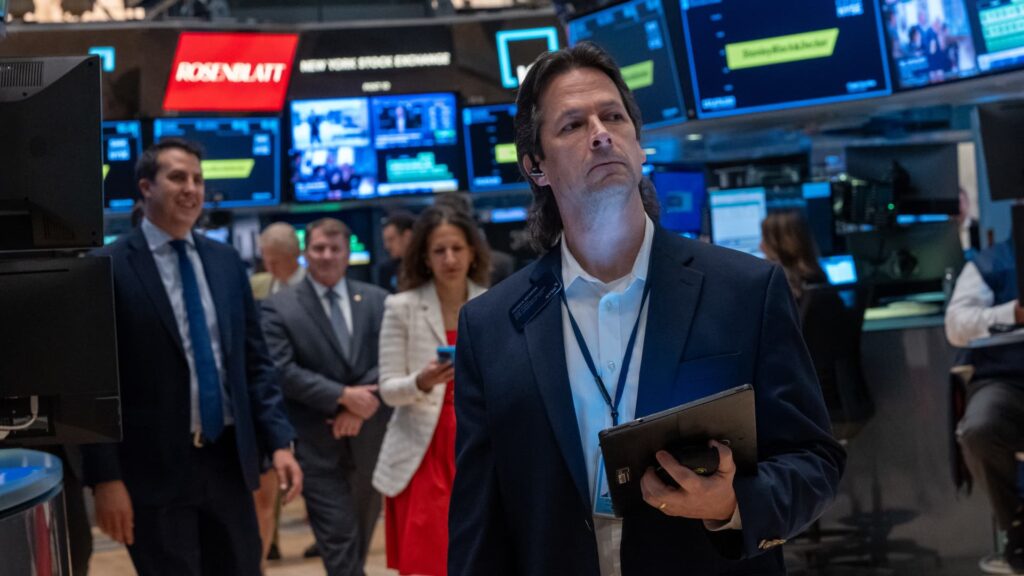
Small-cap stocks have failed to keep pace in the market rally of 2023 and 2024, and the forecast of conditions that could fuel a catch-up trade keep getting pushed further into the future. The Russell 2000 has gone more than 600 trading days without a record high, dating back to November 2021. That’s the third-longest stretch on record, trailing only the down periods following the financial crisis and the burst of the tech bubble, according to Todd Sohn, exchange-traded fund and sector strategist at Strategas. .RUT 5Y mountain The Russell 2000 has not made a new high in more than two years. The gap has come even as the major large-cap indexes have roared to record highs this year. And while history and technical indicators show the gap between large and small caps is likely to close eventually that point does not appear imminent. “With yields holding firm at elevated levels , large caps continue to outperform small caps. [A] simple longer term chart of the Russell 1000 versus the Russell 2000 shows large cap outperformance reached a multi-decade high and can become even more stretched,” JC O’Hara, chief market technician at Roth MKM, said in a note to clients Monday. The long period of underperformance hasn’t yet scared off the true believers in the long-term value of small-cap investing. Chad Miller, a senior portfolio manager at Thrivent, said he doesn’t think anything has “structurally changed” that would keep smaller stocks from bouncing back. “As we look forward, typically those have been opportunities. When you’ve seen those gaps diverge, and the small- and mid-caps have really underperformed, that’s when you’ve wanted to say ‘OK, we’re getting paid to take a little bit higher risk in those small caps.’ … I think over the long term I would take that bet,” Miller told CNBC. Miller is one of the managers on the Thrivent Small-Mid Cap ESG ETF (TSME) , which is overweight industrials, tech and consumer discretionary relative to its benchmarks, he said. But for investors who are less comfortable picking through small caps to find the winners, they may wait for macro factors to improve before jumping in and lifting the full index. Waiting on a rate cut One of the issues weighing on small-cap stocks is higher interest rates. Broadly speaking, small caps tend to have higher credit risk than their larger counterparts. When interest rates rise, it can become prohibitively expensive for those smaller firms to take out new debt or refinance what’s already on the books. Higher interest rates are particularly a big problem for small banks, as it hurts the bonds and loans they own as assets while also increasing the cost of deposits. Financials account for more than 15% of the iShares Russell 2000 ETF (IWM) , and the sector’s struggles around the failure of Silicon Valley Bank and other regional lenders is one of the factors contributing to small-cap underperformance. Hopes for multiple rate cuts from the Federal Reserve this year have dimmed after recent inflation readings showed signs of stickiness. Until the rate cuts start to come, the sector as a whole might be stuck — even for the strong individual names, said State Street global macro multi-asset strategist Cayla Seder. “We really want to see areas that can deliver on earnings growth, and we haven’t really seen that from small caps too much. Maybe once we actually get cuts, that can become more attractive and you’ll see more demand to actually pick what small caps are able to actually deliver. But for now the headwind of interest rates feels like it’s too burdensome to take that risk just yet,” Seder said. Earnings growth, even among S & P 500 companies, has been concentrated in Big Tech names. But of course, why the rate cuts happen can be just as important. Companies with weak balance sheets, or banks reliant on loan growth, are likely to struggle if the economy falls into a recession. An economy that is growing more slowly, but with cooler inflation, could be the combination small caps need. Reasons for optimism The small-cap story could also get easier if performance improves, both for the companies themselves and the economy at large. UBS global wealth management said in its June preview note, authored by Mark Haefele and Solita Marcelli, that it prefers small caps to large caps due to the discount and an expected improvement in small-cap earnings. “The S & P 600 small-cap index trades at a discount of roughly 30% to the large-cap index (based on forward price-to-earnings), and we continue to believe that rate cuts should be a positive catalyst for small-cap performance to catch up. Earnings performance for small-caps is highly correlated to large-caps — with larger swings on the upside and downside — and we expect a pickup in small-cap earnings growth over the course of the year,” the UBS note said. Small caps could also benefit from an uptick in the global economy that benefits areas like manufacturing that has heavy representation in the small-cap index. Angelo Kourkafas, senior investment strategist at Edward Jones, said a strong manufacturing purchasing managers index is correlated with small-cap outperformance. The Institute for Supply Management’s PMI has trended higher this year, briefly topping the key level of 50 in March before falling back to 49.2 in April. Investors who really want exposure to small caps could also look outside of the U.S. Wolfe Research analyst Rob Ginsberg said in a May 29 note to clients that global small caps are outperforming their U.S. counterparts and are poised for a potential breakout. — CNBC’s Michael Bloom contributed reporting.






